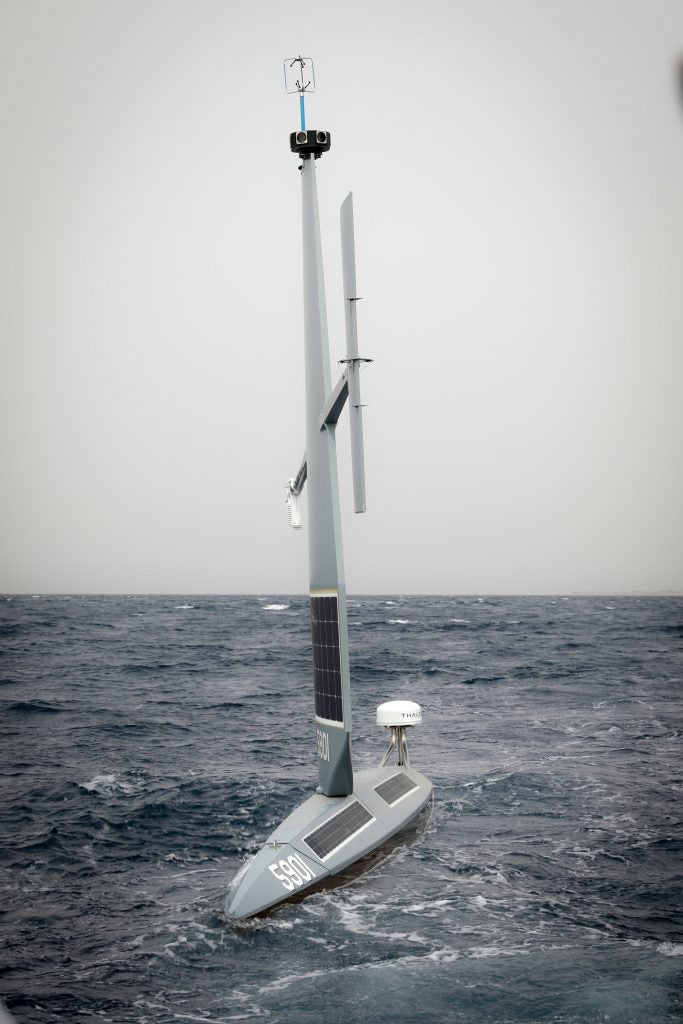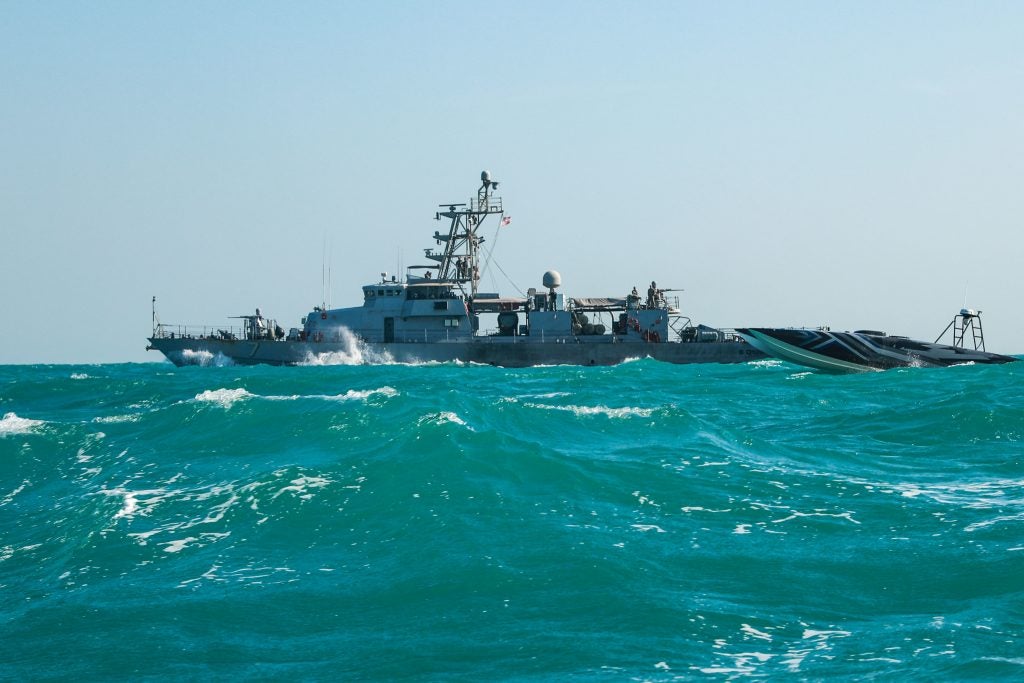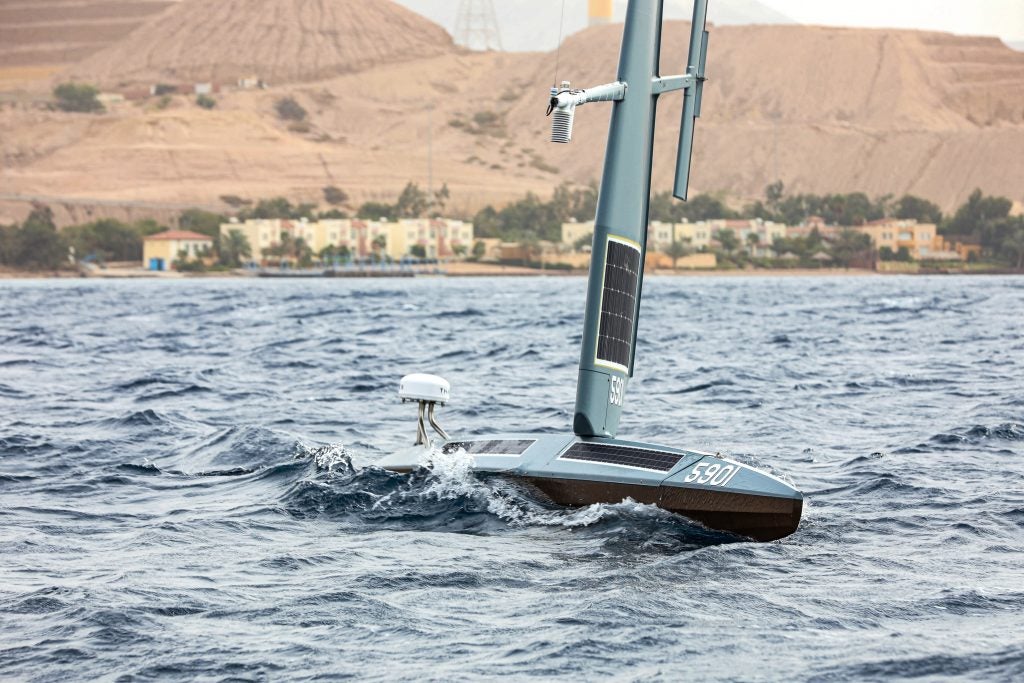US Naval Forces Central Command Begins Operational Testing Of New Saildrone Explorer USV
U.S. Naval Forces Central Command (NAVCENT) has revealed that its unmanned task force, Task Force 59, began operational testing of a new unmanned surface vessel in the Gulf of Aqaba on December 12.
Task Force 59 launched a Saildrone Explorer unmanned surface vessel for the first time during Exercise Digital Horizon. The 23-foot-long, 16-foot-tall USV uses wind power for propulsion, while solar energy powers its sensor suite. According to Task Force 59 commanding officer Captain Michael Brasseur, the Saildrones use machine learning and artificial intelligence to enhance maritime domain awareness, “extending the digital horizon with a sustainable, zero-carbon solution”.

The exercise was launched from the Royal Jordanian Navy’s base in Aqaba. The base at Jordan’s sole sea port was selected last month by U.S. and Jordanian naval leaders as the joint hub for Saildrone operations in the Red Sea.
Captain Brasseur added:
“These are exciting times for Task Force 59 as we team with the Royal Jordanian Navy to establish our hub for Red Sea operations in Aqaba and deploy some of our new maritime robotics.”
Exercise Digital Horizon follows Exercise New Horizon, which was held off the coast of Bahrain in October. Exercise New Horizon saw Task Force 59 integrate and evaluate MANTAS T-12 USVs with manned U.S. Navy patrol craft and manned and unmanned U.S. aerial assets, as well as maritime assets of the Royal Bahrain Naval Force (RBNF) and Bahrain Coast Guard.

NAVCENT says that it is in the early stages of integrating unmanned systems and artificial intelligence into the U.S. 5th Fleet operational environment, having also initiated at-sea operational tests for a MANTAS T-38 USV off the coast of Bahrain on December 4. The command says that the Middle East is the “ideal environment for unmanned innovation through multilateral collaboration”, due to its unique geography, climate and strategic importance.

